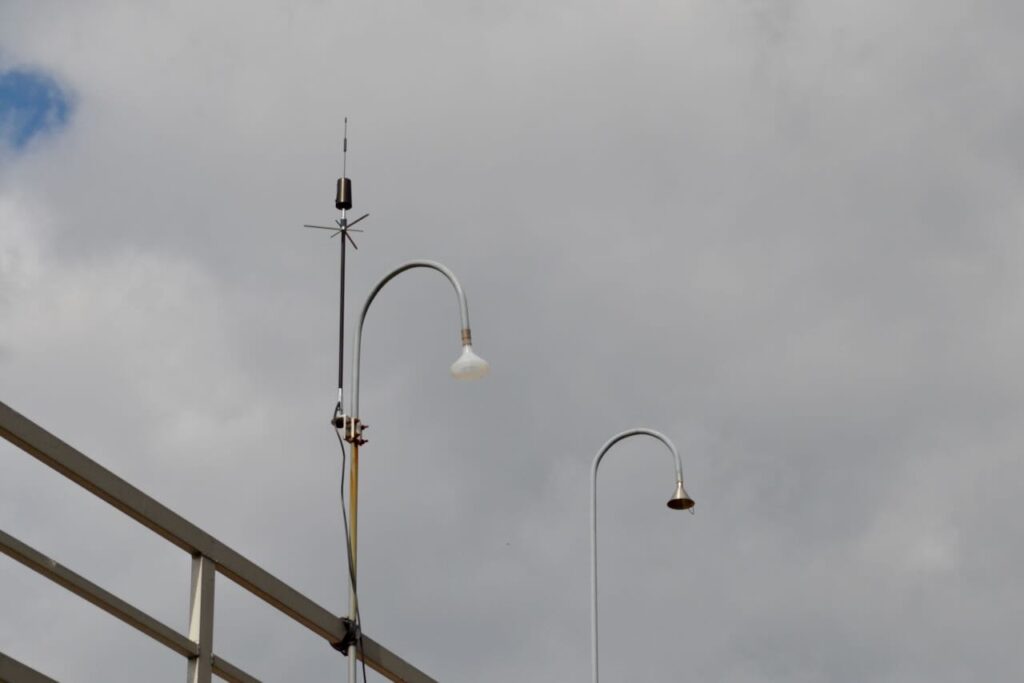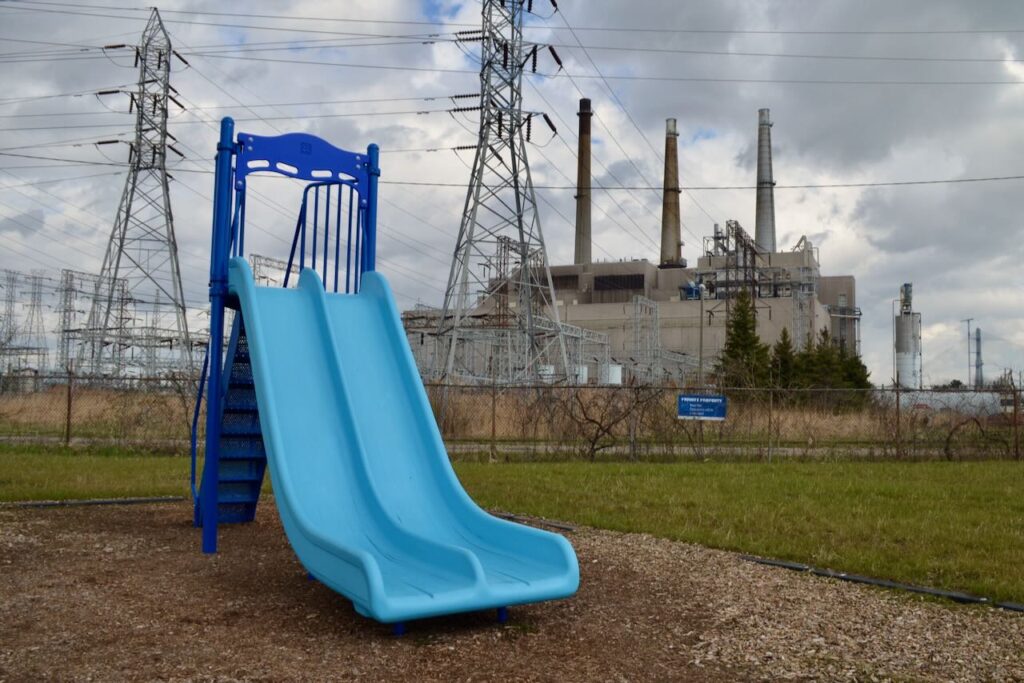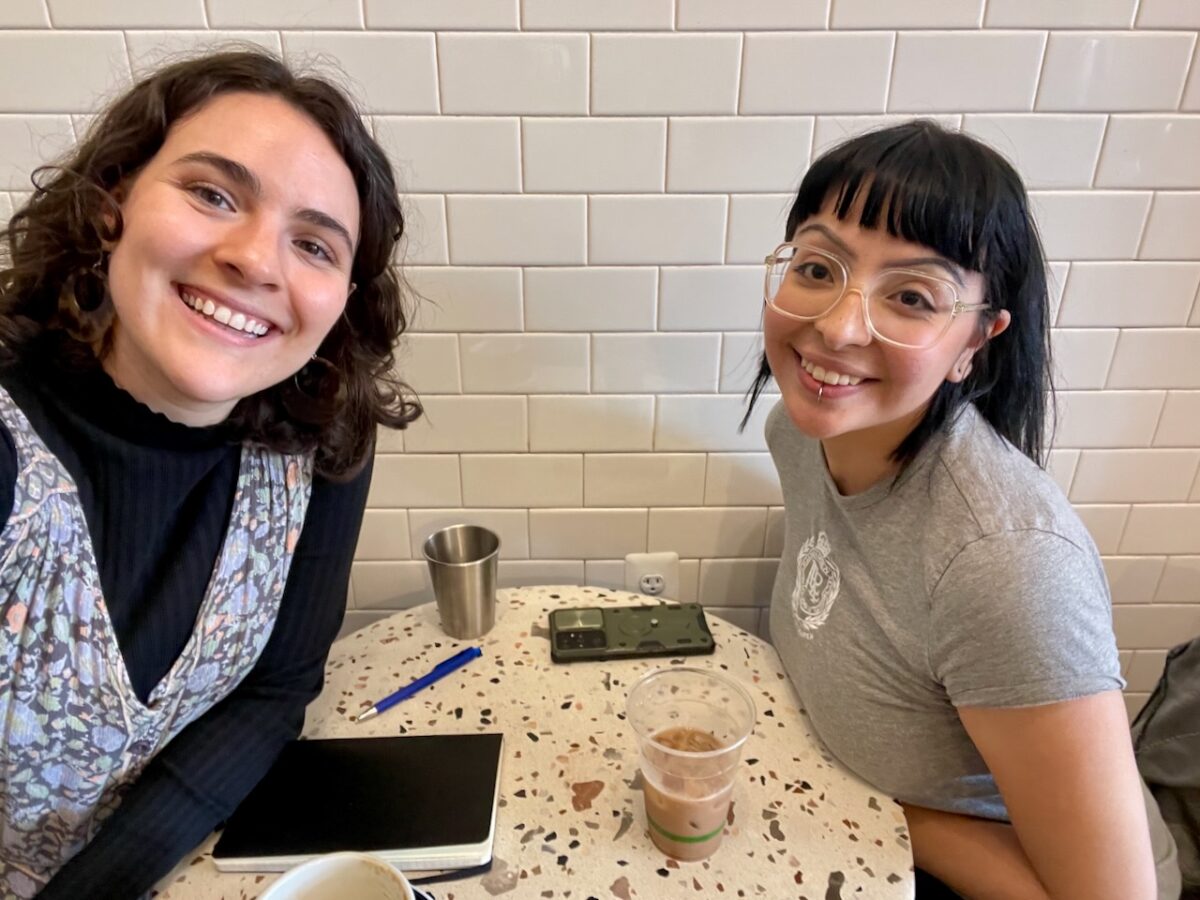Overview:
-Students in an environmental justice club at Cristo Rey High School are documenting their experiences through art and storytelling.
-The "toxic tour" of the 48217 zip code with activist Theresa Landrum included a stop at an air monitoring station at New Mt. Hermon Church in Detroit's Boynton neighborhood.
-At a site near West Jefferson Avenue and Outer Drive West in Ecorse, piles of slag are visible just yards from residential homes.
Five students from Cristo Rey High School’s Environmental Justice Club toured parts of Southwest Detroit on Monday they don’t typically see — but that impact their environment.
The “toxic tour,” guided by longtime environmental activist Theresa Landrum, offered the students an opportunity to see firsthand the environmental challenges that define their neighborhood and which they are now are documenting and analyzing through art and storytelling.
The tour was part of a broader youth journalism project facilitated by the author of this story, a corps member with Report for America placed at Planet Detroit. From February to May 2025, the project aims to empower students to creatively engage with environmental issues affecting their community.
The students are learning photography, writing, research, and public speaking skills while diving deep into the environmental stories that shape their daily lives.
The Monday tour included seven key stops across the 48217 zip code, which is often labeled as Michigan’s most polluted. The trip began at the Kemeny Recreation Center, where students learned about the area’s historical significance and legacy of pollution. The recreation center sits across the I-75 freeway from Marathon Petroleum Corp.
From there, they viewed large-scale environmental murals created in the area by University of Michigan students, one of which on Fort Street depicts a protest with the words “People over profit” in dark blue lettering.

A close-up of air monitoring equipment installed at New Mt. Hermon Church in Detroit’s Boynton neighborhood. Photo by Dustin Blitchok.
Students then visited an air monitoring station at New Mt. Hermon Church, which tracks pollutants in one of Detroit’s most heavily industrialized neighborhoods. The station was established by Michigan’s Department of Environment, Great Lakes, and Energy after residents of the 48217 zip code voiced concerns about impacts from industry and traffic on their air quality and health.
A one-year air monitoring study was conducted at the church starting in 2016 and a final report was published in 2018, in a community-led effort in collaboration with state, federal, nonprofit, and academic partners.
The report found sulfur dioxide, lead, and PM2.5 were below the federal health-based standards, but arsenic levels were above one of the health-based levels for cancer risk and all other sites throughout the state.
Data on fine particulate matter and sulfur dioxide are measured at the Deacon Street site, and levels of arsenic, cadmium, lead, manganese, and nickel are collected every six days and sent to a laboratory for analysis, according to the report.
The church’s monitoring station is crucial to understanding pollution in residential areas, Landrum said, as monitors are typically placed near industrial sites, she said. During the tour, Landrum highlighted the cumulative impact of pollutants from various nearby sources, such as Ford, Cleveland Cliffs, and DTE Energy, and advocated for laws considering combined emissions.
“Benzene on any level is dangerous to human health, so we need to look at the combined emissions from all industries,” Landrum said.
MORE REPORTING FROM PLANET DETROIT
Café y Chisme No. 5: How Andrea Meza amplifies Detroit’s community voices
Andrea Meza, a journalist and caseworker, is reclaiming narratives in Detroit by spotlighting water infrastructure failures and the cultural richness of lowrider communities. Her work advocates for inclusive journalism that truly reflects the voices of the community.
Smartphones become tool in Detroit’s flood fight: ‘Sometimes the streets are almost entirely water’
Gabriel Andersen, a 17-year-old senior at César Chávez Academy High School, earns extra money by documenting Southwest Detroit flooding using the Flood Focus app, a tool designed to tackle persistent flooding issues through community-driven data collection.
How Trump’s tariffs are set to raise Michigan grocery prices
Trump’s tariffs on imports could lead to a 2.8% increase in food prices, disproportionately impacting low-income households and complicating decision-making for food companies and farmers.

A Chevrolet Corvair parked on Bonzanno Street in Ecorse, with piles of slag visible in the background. Photo by Dustin Blitchok.
Next, the group stood before massive piles of slag, a byproduct of steel purification, at the U.S. Steel site in Ecorse. The industrial waste is dumped just yards from homes, with no protective barrier in sight. Landrum said there’s been a lack of transparency from local officials about industrial pollution, which she added could affect school enrollment and property values.
“They’re not going to talk about industrial impact, because it impacts their bottom line,” Landrum said.
“They want the kids to come and go to school here, and if you say you got pollution next to the school, what parent wants to send a kid to a pollution place?”
The tour continued past the U.S. Steel Great Lakes Steel Works facility in Ecorse and a retired DTE coal-powered plant, before concluding at River Rouge’s Belanger Park, a waterfront park with views of the former coal plant.

Belanger Park in River Rouge. The coal-fired DTE Energy power plant to the east of the park was retired by the utility in 2021. Photo by Dustin Blitchok.
Throughout the tour, Landrum offered insight into decades of her grassroots environmental justice organizing, giving students a sense of history, resistance, and resilience.
As the storytelling project unfolds, students will use the photos and notes they gathered to create an exhibition for the community in May.
They’ll share their reflections through photography, art, and written captions — shaped with guidance from professionals like Planet Detroit’s Managing Editor Dustin Blitchok, who led a research session, and cultural organizer Erik Paul Howard, who helped students explore finding their visual voice through photography.
This immersive, hands-on approach is helping students not only understand the scope of pollution in their neighborhood but also see the strength in their voices.





